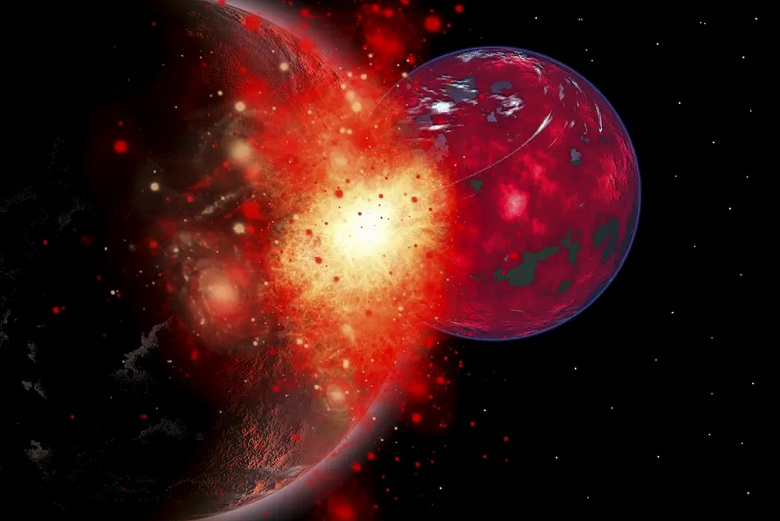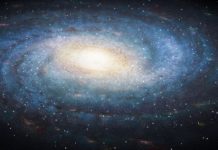Two giant icy planets have collided, providing astronomers with the first such collision.
Astronomers captured the aftermath of the disaster – two planets destroyed each other, forming a donut-shaped cloud, red-hot. This was the first observation of the consequences of a planetary collision.
The observations could shed light not only on destructive interplanetary collisions but perhaps even how they could lead to the formation of new planets.
Astronomers first noticed this event in 2021 when they noticed the visible light of the star ASASSN-21qj being repeatedly obscured. It turned out that this is not the first time the star’s brightness has changed; an analysis of previous observations showed that three years before the decrease in brightness, ASASSN-21qj doubled its luminosity in the infrared spectrum.

This raised the question: How can a star appear brighter in one spectrum and dimmer in another?
“We looked at a range of possible ideas. The one that seemed to fit all the data we had was a collision of two giant icy planets,” said study co-author Matthew Kenworthy, an astronomer at Leiden University in the Netherlands.
Astronomers have seen for the first time the aftermath of the collision of two giant icy planets
According to theory, these ice giants would each be the size of Neptune, which is 17 times the mass of Earth. When they collided, they practically paralyzed each other, forming a donut-shaped cloud of hot debris. The heat of this cloud, estimated at 1,300 degrees Fahrenheit, explains the increase in brightness in the infrared.
Then, as the newly formed donut continued to orbit ASASSN-21qj, it passed between the star and Earth, obscuring the light for astronomers. This is an interesting explanation, but not complete. Astronomers still don’t know what triggered the planetary collision.
Although a planetary collision seems like the most likely possibility based on available data, it is a fairly rare occurrence. With an estimated age of about 300 million years, the star system must have been too mature for such collisions to still occur.
More observations should help confirm the collision did occur, but what’s even more tantalizing is that astronomers believe that new planets and moons could eventually be born from this cloud.
“My prediction is that in five to ten years we will start to see additional light emission from the system reflected from the dust cloud. If that doesn’t happen, then something else happened,” Kenworthy said.




